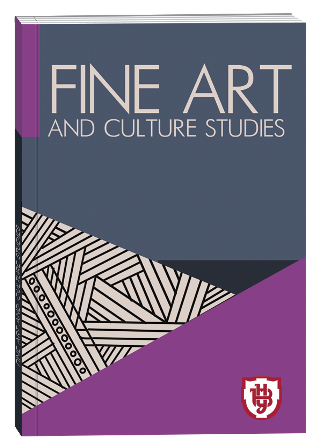MUSEUMS OF THE FUTURE: HOW VR, AR, AND INTERACTIVE TECHNOLOGIES ARE CHANGING THE PERCEPTION OF ART
DOI:
https://doi.org/10.32782/facs-2025-1-60Keywords:
virtual reality (VR), augmented reality (AR), interactive museum space, mediation of artistic narrative, phenomenology of virtual perceptionAbstract
The rapid development of digital technologies is leading to profound changes in the perception of art within the museum world. The disappearance of the traditional division between exhibit and visitor, facilitated by the use of virtual and augmented reality as well as interactive technologies, compels a re-examination of the meaning of artistic works. New technologies create a museum space where sensory experiences become even more realistic, and the perception of art becomes more diverse. The aim of this study is to determine and demonstrate how VR, AR, and interactive technologies transform the perception of art in the museums of the future. The methodological framework of the study is based on a combination of comparative analysis, the phenomenological approach, and the structural-semiotic method. Comparative analysis is applied to juxtapose traditional and innovative exhibition formats, considering the technological transformation of museum spaces. The phenomenological approach enables the examination of the specifics of perceiving artistic artifacts in VR and AR environments, focusing on changes in cognitive and sensory mechanisms of interaction with virtualized art. The structural-semiotic method is used to analyze the reconfiguration of sign systems within the digital exhibition space, allowing for the tracking of modifications in the semiotic representation of artistic objects during their interactive mediation. The research trajectory aligns with the identification of transformational models of artistic narrative perception in the context of VR and AR integration. It has been found that virtual exhibitions reduce traditional spatial and temporal constraints, enabling multimodal interpretation of artistic artifacts through the symbiosis of audiovisual and tactile experiences. A fundamental conclusion of the study is the acknowledgment of the dynamic deconstruction of classical exhibition practices caused by the incorporation of interactive mechanisms and digital immersivity. It has been established that the phenomenology of aesthetic content perception undergoes modifications toward extended reality, where the dematerialization of the artistic object correlates with the reinterpretation of its semiotic substance. The virtual museum space transforms into a metadiscursive platform where the meaning of an artistic work becomes dynamic and reflexively open.
References
Poulopoulos V., Wallace M. Digital technologies and the role of data in cultural heritage: The past, the present, and the future. Big Data and Cognitive Computing. 2022. Vol. 6, No. 3. URL: https://mdpi-res.com/d_attachment/BDCC/BDCC-06-00073/article_deploy/BDCC-06-00073.pdf?version=1656925734
Giannini T., Bowen J. P. Museums and Digital Culture: From reality to digitality in the age of COVID-19. Heritage. 2022. Vol. 5, No. 1. P. 192–214.
Likarchuk N., Andrieieva O., Likarchuk D., Bernаtskyi A. Impression marketing as a tool for building emotional connections in the public administration sphere. Studies in Media and Communication. 2022. No. 10 (1). P. 9–16.
Leopardi A., et al. X-reality technologies for museums: a comparative evaluation based on presence and visitors experience through user studies. Journal of Cultural Heritage. 2021. Vol. 47. P. 188–198.
Родінова Н., Айрапетян Г. Новітні технології у роботі музеїв. The XXVII International Science Conference «Multidisciplinary academic research and innovation». May 25 – 28, 2021, Amsterdam, Netherland. 2021. P. 809–815.
Trunfio M., et al. Innovating the cultural heritage museum service model through virtual reality and augmented reality: The effects on the overall visitor experience and satisfaction. Journal of Heritage Tourism. 2022. Vol. 17, No. 1. P. 1–19.
Kamariotou V., Kamariotou M., Kitsios F. Strategic planning for virtual exhibitions and visitors’ experience: A multidisciplinary approach for museums in the digital age. Digital Applications in Archaeology and Cultural Heritage. 2021. Vol. 21. URL: https://ruomoplus.lib.uom.gr/bitstream/8000/1322/1/Strategic planning for virtual exhibitions and visitors experience_A multidisciplinary approach for museums in the digital age.pdf
Simone C., Cerquetti M., La Sala A. Museums in the Infosphere: Reshaping value creation. Museum Management and Curatorship. 2021. Vol. 36, №. 4. P. 322–341.
Taormina F., Bonini Baraldi, S. Museums and digital technology: a literature review on organizational issues. Rethinking Culture and Creativity in the Digital Transformation. 2023. P. 69–87.
Li J., et al. A systematic review of digital transformation technologies in museum exhibition. Computers in Human Behavior. 2024. URL: https://dl.acm.org/doi/10.1016/j.chb.2024.108407
Al Saffar M. Smart Tourism Technologies in Museums: Opportunities and Challenges. 2024 2nd International Conference on Sustaining Heritage: Embracing Technological Advancements (ICSH). IEEE, 2024. URL: https://ieeexplore.ieee.org/abstract/document/10779813
Zhou Y., Chen J., Wang M. A meta-analytic review on incorporating virtual and augmented reality in museum learning. Educational Research Review. 2022. Vol. 36. URL: https://www.sciencedirect.com/science/article/abs/pii/S1747938X22000239
Museum of the Future, UAE. 2025. URL: https://museumofthefuture.ae/en/program/vr-workshop
ARTECHOUSE. Museum USA. 2025. URL: https://www.artechouse.com/location/nyc/







